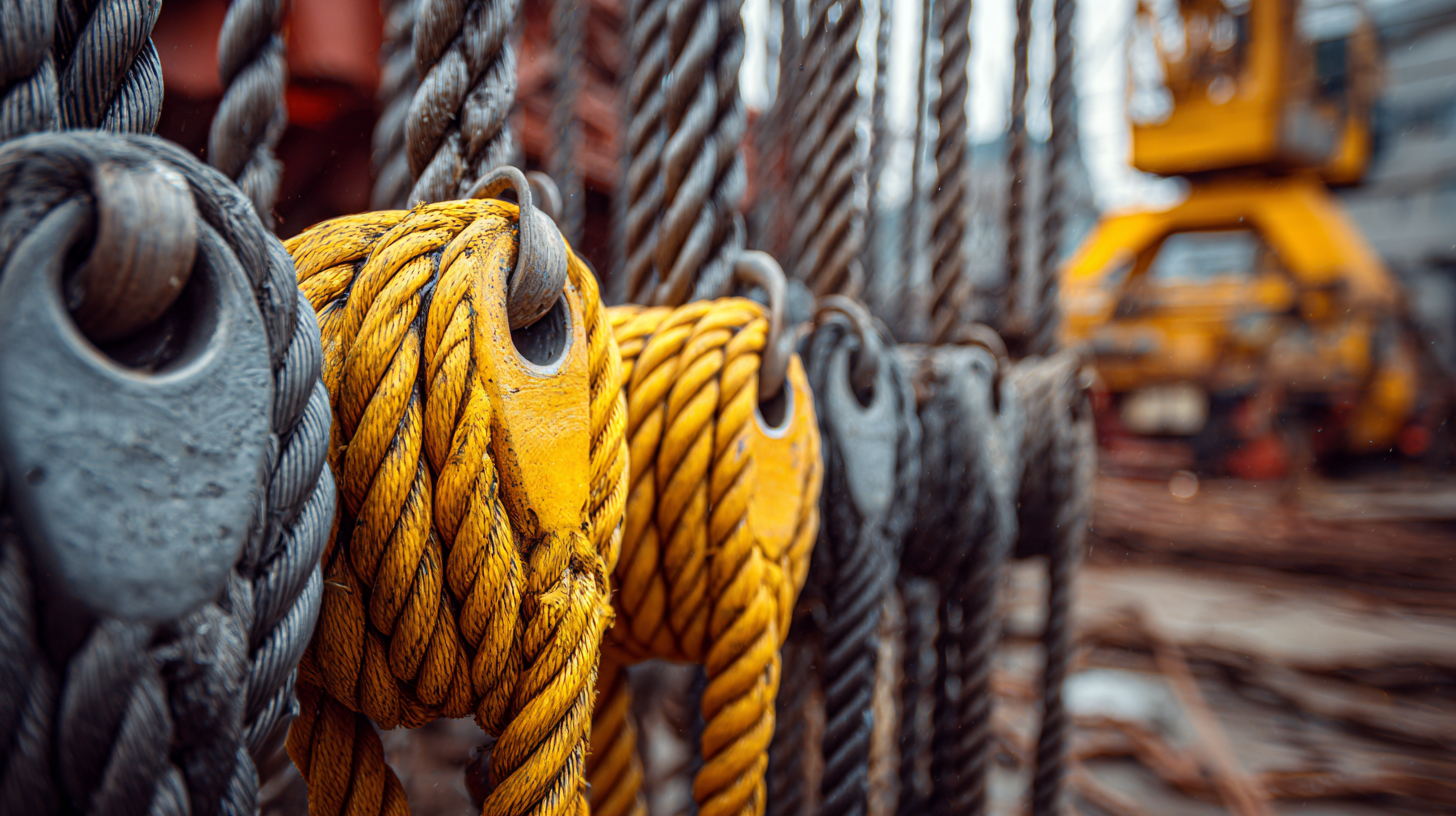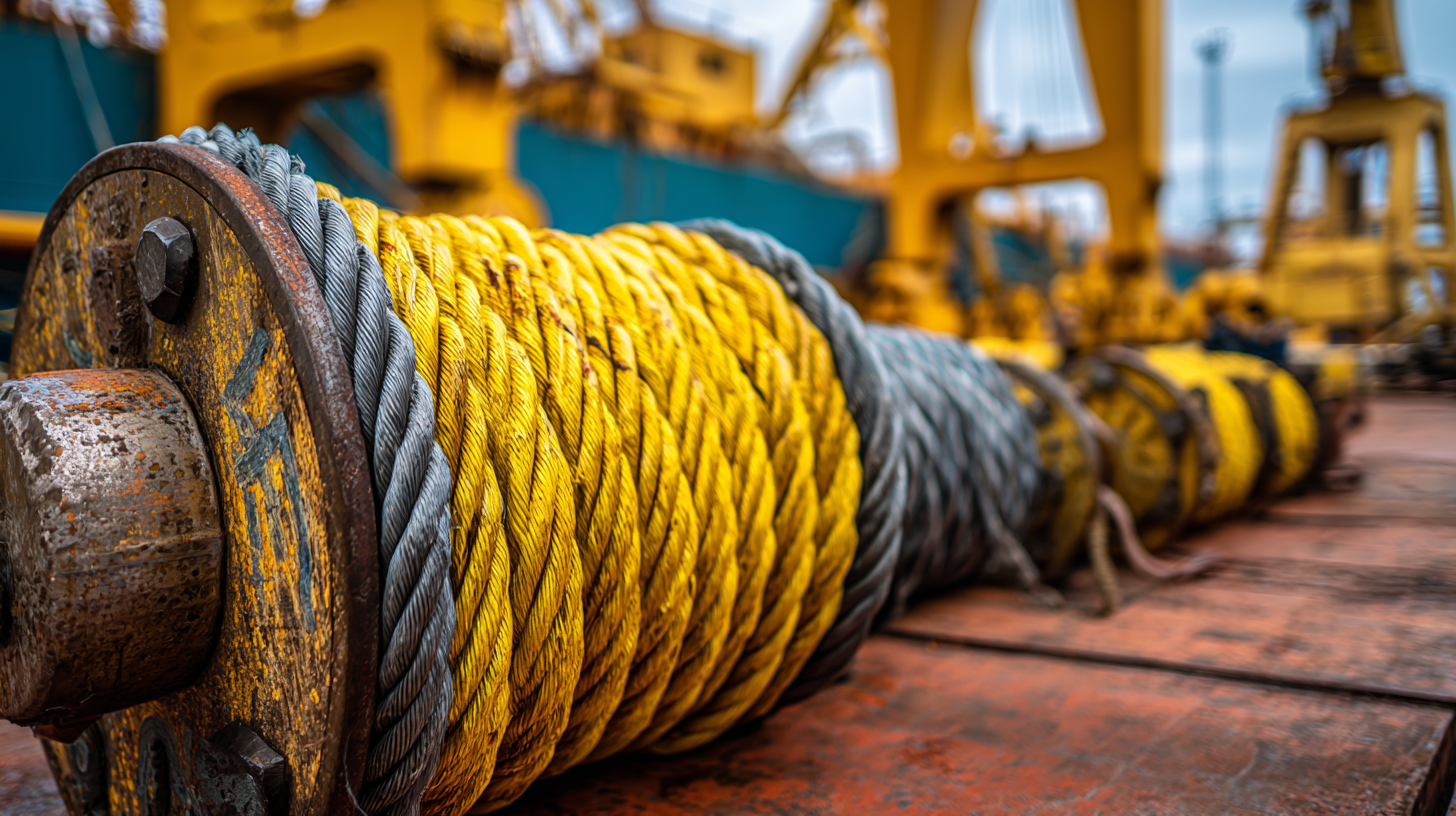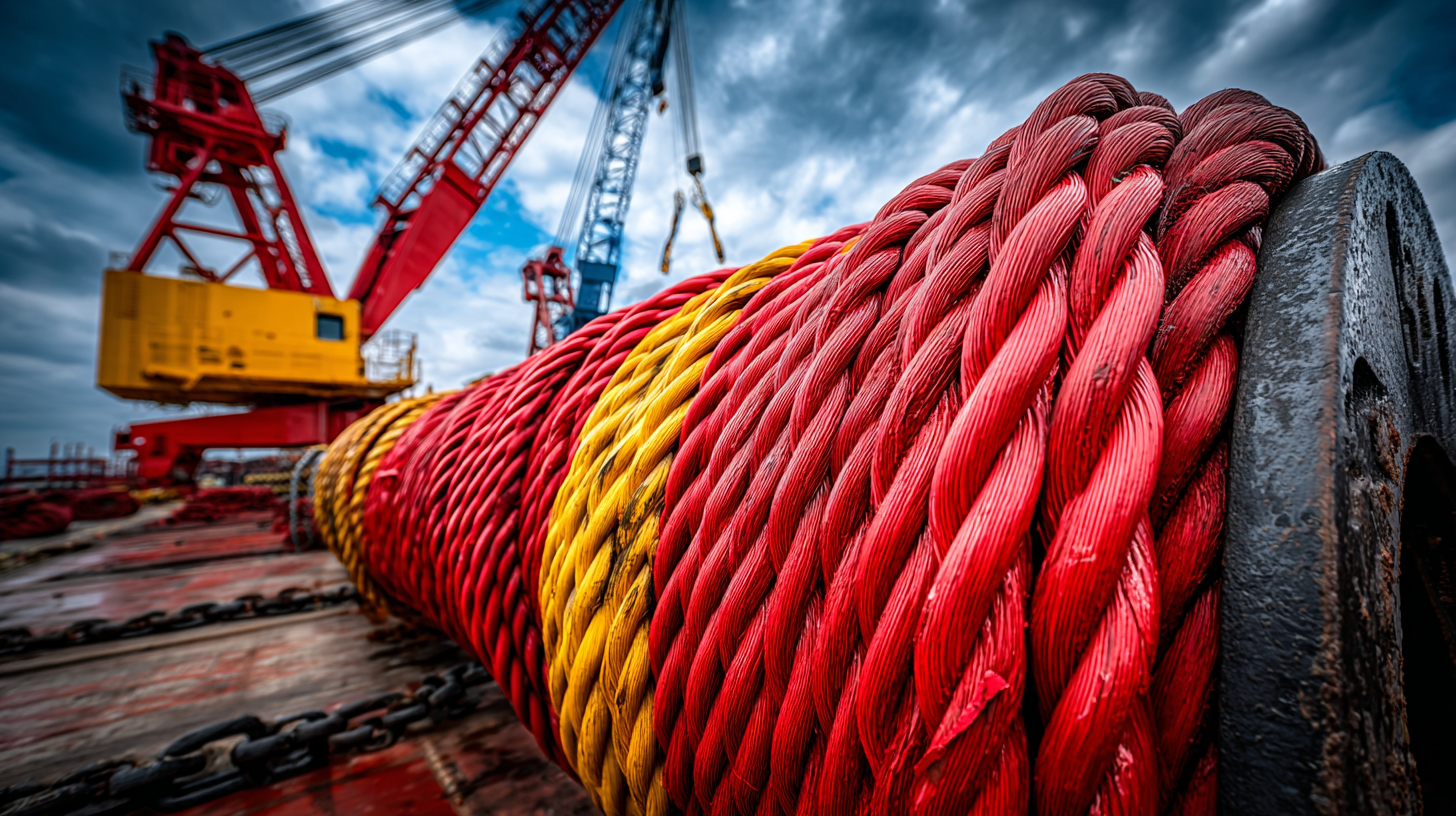How to Choose the Best Lifting Crane Rope for Optimal Performance and Safety
In the construction and heavy lifting industries, the importance of selecting the right
Lifting Crane Rope cannot be overstated. According to the
International Organization for Standardization (ISO), improper rope selection can lead to a
staggering 30% of crane-related accidents, underscoring the critical role of this
component in ensuring both performance and safety. Additionally, a report by the Occupational Safety and
Health Administration (OSHA) highlights that using inadequately rated or deteriorated ropes can
significantly increase the risk of failures during critical lifts.

As construction projects become more complex and demanding, the need for high-performance lifting
equipment is paramount, making it essential for professionals to choose
Lifting Crane Rope that meets stringent safety standards while
optimizing operational efficiency. This blog will guide you through the essential factors to consider
when selecting the ideal lifting crane rope to enhance both safety
and performance in your operations.
Understanding the Different Types of Crane Ropes for Optimal Use
When selecting crane ropes, understanding the different types available is crucial for ensuring optimal performance and safety. Steel wire hoisting ropes are among the most common choices used in various applications, from construction cranes to maritime operations. The behavior of these ropes can vary significantly based on their geometric and constructive features, which affect their strength, flexibility, and resistance to wear. For instance, 6x19 and 6x37 constructions are popular for their balance of strength and flexibility, making them suitable for lifting heavy loads efficiently.
It's also essential to consider the operational environment when choosing crane ropes. Ropes that will be used in harsh conditions, such as those exposed to saltwater or extreme temperatures, should be resistant to corrosion and wear. Understanding the specific requirements of your lifting tasks can help in selecting the most appropriate type of crane rope. Regular inspections and maintenance of the ropes are necessary to identify wear and tear, ensuring safety and optimal performance during operations. By making informed choices about crane ropes, operators can enhance their lifting capabilities while minimizing risks.
How to Choose the Best Lifting Crane Rope for Optimal Performance and Safety
This chart illustrates the load capacities of different types of crane ropes. When selecting a lifting crane rope, consider the load capacity requirements alongside other factors such as flexibility, durability, and the specific application for optimal performance and safety.
Key Factors to Consider When Selecting Lifting Crane Ropes
When selecting the best lifting crane rope, there are several key factors to consider to ensure optimal performance and safety. First and foremost, understanding the type of material used in the crane rope is essential. Ropes made from synthetic fibers, such as nylon or polyester, offer high strength and lightweight characteristics, while steel ropes provide exceptional durability and resistance to abrasions. The choice between these materials often depends on the specific lifting requirements and environmental conditions of the job site.
Another critical factor to evaluate is the rope diameter and construction. A thicker diameter generally means higher load capacity, but it can also add weight and reduce flexibility. It's crucial to match the rope construction—such as single-braid, double-braid, or wire rope—to the crane's lifting system and the nature of the loads being handled.
Furthermore, always consider the working load limit (WLL) and safety factors in relation to the lifting tasks. Ensuring that the rope meets or exceeds the necessary specifications will help prevent failures and accidents, ultimately promoting a safer working environment.
Safety Standards: Ensuring Quality in Crane Rope Selection
When selecting crane ropes, safety standards play a pivotal role in ensuring optimal performance and safeguarding workers. The importance of adhering to recognized safety guidelines cannot be overstated, as using subpar ropes can lead to catastrophic failures and significant injuries on site. Crane ropes must be chosen not only for their strength and durability but also for their compliance with industry safety regulations, which dictate the acceptable materials and construction methods for lifting equipment.
Crane ropes should undergo rigorous testing and inspections to confirm their integrity and performance under load. Regular maintenance further ensures that any signs of wear, corrosion, or damage are identified before they pose a risk. Additionally, operators must be trained in recognizing the limitations of their equipment, including understanding the role of slings in load stabilization during lifts. A comprehensive approach to crane rope selection, grounded in strict adherence to safety standards, ultimately fosters a safer working environment and enhances operational efficiency.
How to Choose the Best Lifting Crane Rope for Optimal Performance and Safety
| Rope Type |
Material |
Diameter (mm) |
Breaking Strength (kN) |
Safety Factor |
Applications |
| Wire Rope |
Steel |
12 |
60 |
5:1 |
Construction, Industrial |
| Synthetic Rope |
Polyester |
14 |
30 |
7:1 |
Maritime, Event Rigging |
| Chain Rope |
Alloy Steel |
10 |
70 |
4:1 |
Mining, Heavy Machinery |
| Braided Rope |
Nylon |
16 |
25 |
6:1 |
Sport Fishing, Climbing |
Material Matters: Choosing the Best Rope Composition for Performance
When selecting a lifting crane rope, the composition of the material is paramount for ensuring optimal performance and safety. The two most commonly used materials for crane ropes are synthetic fibers and steel. Synthetic ropes, crafted from high-strength polymers, offer remarkable flexibility and lightweight properties, making them easier to handle and less cumbersome during operations. They also have excellent resistance to environmental factors, such as UV rays and chemicals, which can contribute to a longer lifespan under harsh conditions.
 On the other hand, steel ropes are traditionally favored for their immense strength and durability. The composition of the wire strands and the design of the rope can drastically affect its load-bearing capabilities. Steel ropes are well-suited for heavy-duty applications and provide reliable performance when properly maintained. However, they often require more routine inspection and care to prevent corrosion and other wear factors. Ultimately, choosing the right material is crucial; it should align with the specific operational needs, load requirements, and environmental conditions to ensure safety and efficiency in lifting operations.
On the other hand, steel ropes are traditionally favored for their immense strength and durability. The composition of the wire strands and the design of the rope can drastically affect its load-bearing capabilities. Steel ropes are well-suited for heavy-duty applications and provide reliable performance when properly maintained. However, they often require more routine inspection and care to prevent corrosion and other wear factors. Ultimately, choosing the right material is crucial; it should align with the specific operational needs, load requirements, and environmental conditions to ensure safety and efficiency in lifting operations.
Maintenance Tips to Extend the Life of Your Lifting Crane Rope
When it comes to lifting crane ropes, regular maintenance is crucial for ensuring both performance and safety. According to a report by the
Occupational Safety and Health Administration (OSHA), nearly 40% of workplace accidents involve issues with lifting equipment, often linked to poor rope maintenance. To extend the life of your lifting crane rope, it is important to conduct routine inspections for wear and tear. Checking for fraying, rust, and signs of fatigue can prevent catastrophic failures and enhance the longevity of the equipment.
Additionally, proper lubrication is essential. The International Association of Oil and Gas Producers recommends using the correct type of lubricant specific to the rope material to reduce friction and wear. Cleaning the rope from contaminants, such as dirt and grime, also plays a vital role in preserving its integrity, as external debris can accelerate deterioration. Regularly tightening connections and ensuring that the load is evenly distributed can further mitigate stress on the rope, ultimately extending its lifespan and maintaining safety standards in the workplace.

Home
About Us
Products
Stainless Steel Anchor Chain
Manganese Steel Lifting Chain Grade 80
Manganese Steel Lifting Chain
Hastelloy Round Bars
Hastelloy Sheet
Hastelloy steel pipe
Stainless steel wire rope
Stainless steel round
Stainless steel hexagonal rod
Stainless steel strip
Plastic coating wire rope
Stainless steel plate
Stainless steel angle
Stainless steel pipe
Stainless steel wire
Stainless steel flange
Stainless steel channel
Stainless steel flat steel
Industries
News
Service
Blog
Contact Us


 On the other hand, steel ropes are traditionally favored for their
On the other hand, steel ropes are traditionally favored for their